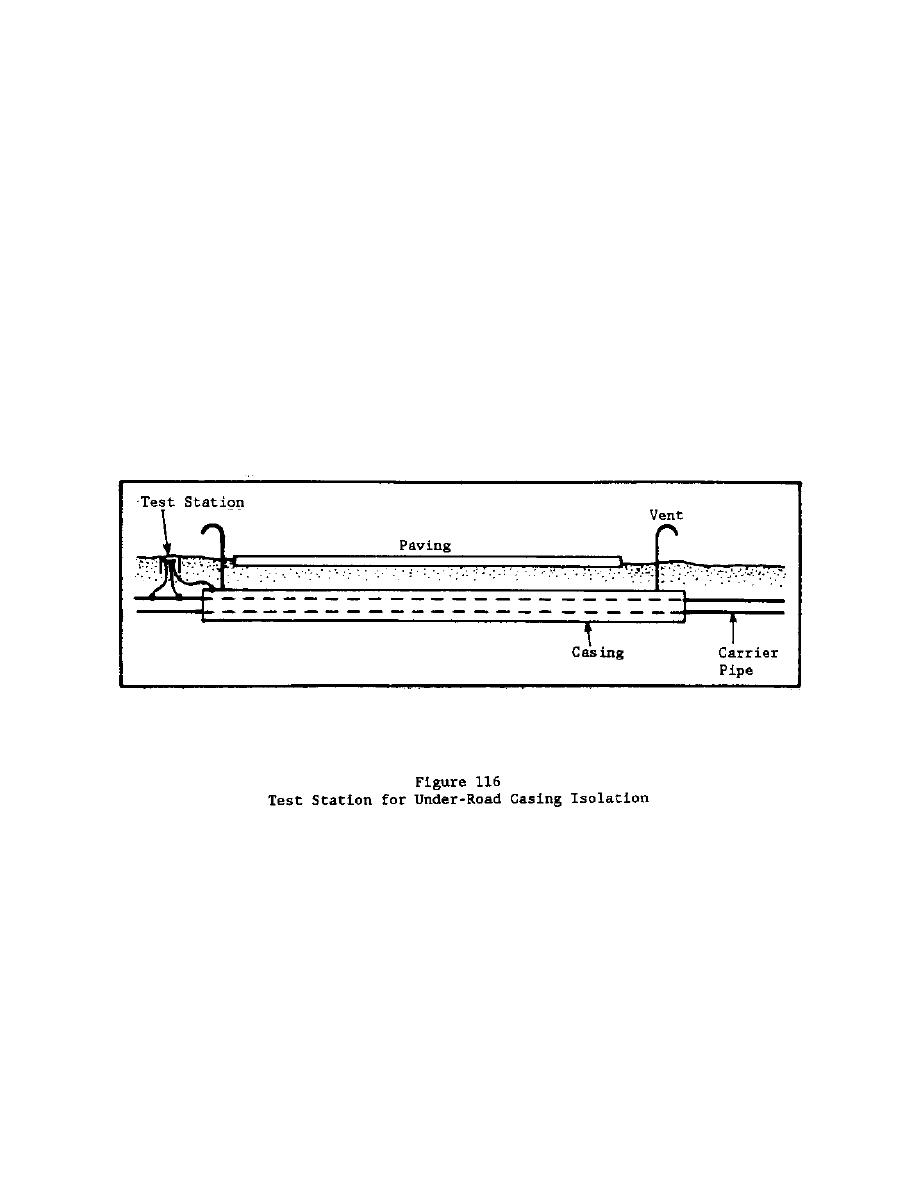
MIL-HDBK-1004/10
test station should be installed at the casing for future measurements.
Figure 116 shows a test station for casing isolation testing.
10.5.2 Foreign Pipeline Crossings. Newly installed pipelines are common
installed under existing lines. The owner of the foreign line should be
contacted to obtain permission to install test leads and possibly to coat
short section of the foreign line. Since solutions to problems at foreig
crossings require cooperative efforts, effective coordination is essentia
As discussed in Section 13 of this handbook, corrosion coordinating
committees have been established in many areas to facilitate coordination
such efforts. Clearance of 2 feet between all lines at crossings is
recommended. If 1-foot clearance cannot be obtained, the use of an
insulating mat as shown in Figure 63 is required. Direct contact between
lines should be avoided at almost any cost. Installation of insulating m
the area or if a new coated line is crossing a poorly coated or uncoated
line. Installation of test stations with provisions for bonding at all
crossings is essential.
10.5.3 Insulating Joints. Insulating, or isolating joints must be selec
so that the materials are compatible with the service environment.
Isolation of steam conduits is especially troublesome. Isolating couplin
must be properly assembled and tested to insure that they will be effecti
When used on welded pipelines, short "spools" of pipe should be welded to
each flange. The flange should then be assembled and the section welded
into the pipeline. This will prevent mechanical damage to the insulating
joint associated with misalignment. Flanges should be tested with a radi
frequency type insulation checker after assembly to insure that they have
been properly assembled. Effectiveness of buried flanges must be verifie
by impressing a
215


 Previous Page
Previous Page
